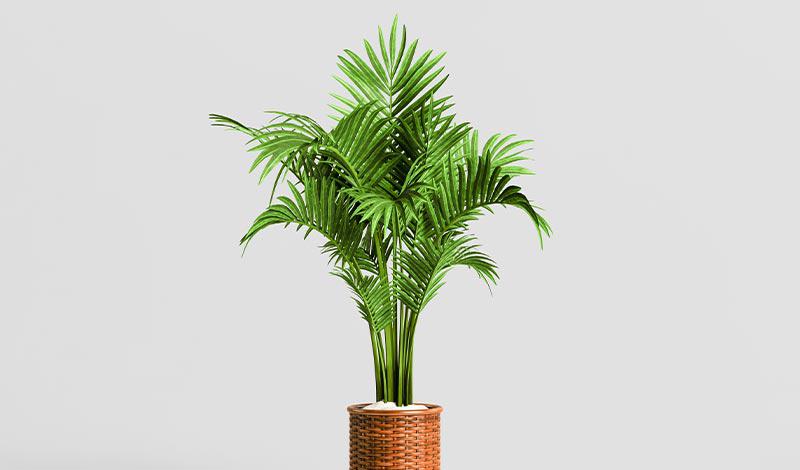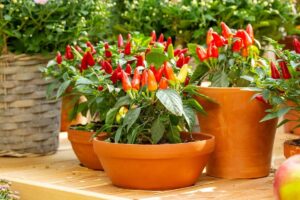
Indoor air quality is a crucial aspect of a healthy living environment, with houseplants playing a significant role in purifying and refreshing the air we breathe. Among the myriad benefits of indoor greenery, the ability to produce oxygen stands out as a key factor in enhancing indoor air quality. In this article, we’ll explore some of the top oxygen-producing houseplants and how they contribute to a healthier indoor environment.
**I. Introduction**
**A. Importance of Indoor Air Quality**
Indoor air pollution can have adverse effects on health, ranging from respiratory issues to headaches and fatigue, underscoring the importance of maintaining clean and fresh indoor air.
**B. Role of Houseplants in Air Purification**
Houseplants act as natural air purifiers, filtering out harmful toxins and pollutants while releasing oxygen through the process of photosynthesis.
**C. Overview of Oxygen-Producing Houseplants**
Certain houseplants are particularly efficient at oxygen production, making them valuable additions to indoor spaces for improving air quality and promoting well-being.
**II. Top Oxygen-Producing Houseplants**
**A. Snake Plant (Sansevieria)**
**1. Botanical Description**
The snake plant, also known as Sansevieria, is characterized by its tall, upright leaves with striking patterns and textures, making it a popular choice for both aesthetic appeal and air purification.
**2. Oxygen Production Rate**
Snake plants are renowned for their exceptional ability to produce oxygen, particularly during the daytime when photosynthesis occurs.
**3. Ideal Growing Conditions**
These hardy plants thrive in bright, indirect light and require minimal watering, making them well-suited for various indoor environments, including low-light spaces.
**B. Areca Palm (Dypsis lutescens)**
**1. Botanical Description**
The Areca palm, with its graceful fronds and tropical charm, adds a touch of elegance to indoor spaces while contributing to improved air quality.
**2. Oxygen Production Rate**
Areca palms are effective oxygen producers, releasing significant amounts of oxygen as they photosynthesize and transpire moisture into the surrounding air.
**3. Ideal Growing Conditions**
These palms thrive in bright, indirect light and prefer humid environments, making them ideal choices for well-lit areas with adequate humidity levels.
**C. Spider Plant (Chlorophytum comosum)**
**1. Botanical Description**
Characterized by its arching foliage adorned with tiny plantlets, the spider plant is a versatile and adaptable houseplant known for its air-purifying properties.
**2. Oxygen Production Rate**
Spider plants excel at oxygen production, making them valuable additions to indoor spaces where air quality is a concern.
**3. Ideal Growing Conditions**
Spider plants thrive in moderate to bright indirect light and prefer well-draining soil, making them suitable for various indoor environments, including hanging baskets and containers.
**III. Additional Oxygen-Producing Houseplants**
**A. Peace Lily (Spathiphyllum)**
**1. Botanical Description**
The peace lily, with its glossy green leaves and elegant white blooms, is prized for its air-purifying qualities and ability to thrive in low-light conditions.
**2. Oxygen Production Rate**
Peace lilies are efficient oxygen producers, particularly in well-lit spaces where they can photosynthesize effectively.
**3. Ideal Growing Conditions**
These plants prefer moderate to low light and consistent moisture levels, making them ideal for offices, bedrooms, and other indoor spaces with limited natural light.
**B. Aloe Vera (Aloe barbadensis miller)**
**1. Botanical Description**
Aloe vera, revered for its medicinal properties and succulent foliage, also contributes to indoor air quality by releasing oxygen during photosynthesis.
**2. Oxygen Production Rate**
While not as prolific oxygen producers as some other houseplants, aloe vera plants still contribute to air purification and can thrive in various indoor environments.
**3. Ideal Growing Conditions**
Aloe vera plants thrive in bright, indirect light and well-draining soil, requiring minimal watering and occasional fertilization to maintain optimal health.
**C. Pothos (Epipremnum aureum)**
**1. Botanical Description**
Pothos, with its cascading vines and heart-shaped leaves, is prized for its adaptability and ease of care, making it a popular choice for indoor greenery.
**2. Oxygen Production Rate**
Pothos plants are efficient oxygen producers, thriving in a range of indoor conditions and contributing to improved air quality.
**3. Ideal Growing Conditions**
These versatile plants tolerate low light and irregular watering, making them suitable for various indoor environments, including offices, bathrooms, and living rooms.
**IV. Tips for Maximizing Oxygen Production**
**A. Proper Placement**
Strategic placement of oxygen-producing houseplants ensures optimal air circulation and oxygenation throughout indoor spaces, promoting better air quality.
**B. Adequate Light and Water**
Meeting the light and water requirements of houseplants is essential for maximizing oxygen production and maintaining overall plant health.
**C. Regular Maintenance**
Routine maintenance tasks, such as pruning, grooming, and pest management, help ensure that oxygen-producing houseplants remain healthy and vibrant, contributing to improved indoor air quality.
**V. Conclusion**
**A. Recap of Top Oxygen-Producing Houseplants**
From snake plants to spider plants, a diverse array of houseplants offers valuable benefits for indoor air
quality, making them indispensable additions to indoor spaces.
**B. Importance of Indoor Greenery for Air Quality**
The presence of oxygen-producing houseplants not only enhances indoor air quality but also contributes to overall well-being and mental health, fostering a connection with nature in indoor environments.
**C. Encouragement for Incorporating Oxygen-Producing Plants in Indoor Spaces**
As awareness of indoor air quality grows, the importance of incorporating oxygen-producing plants into indoor spaces becomes increasingly evident, offering a natural and effective solution for promoting health and well-being.


